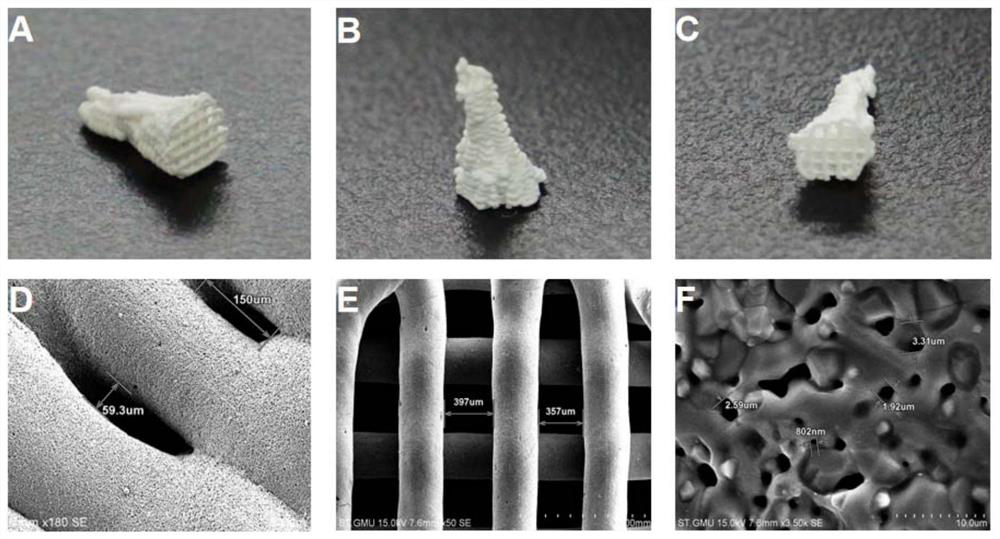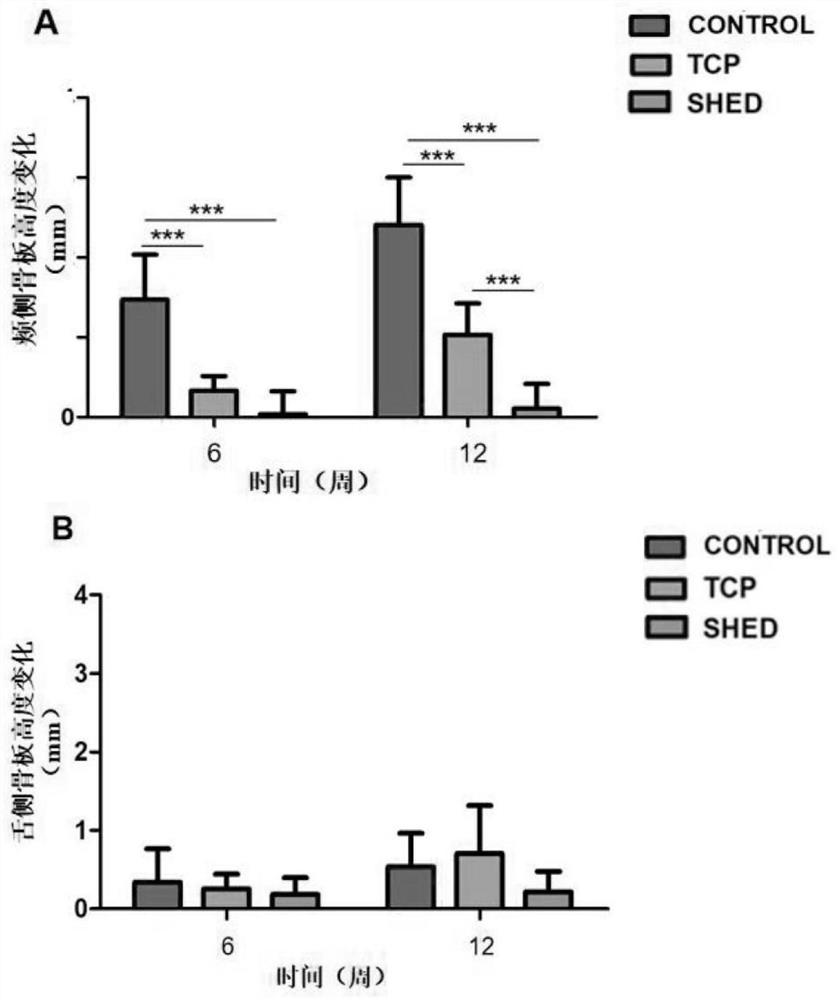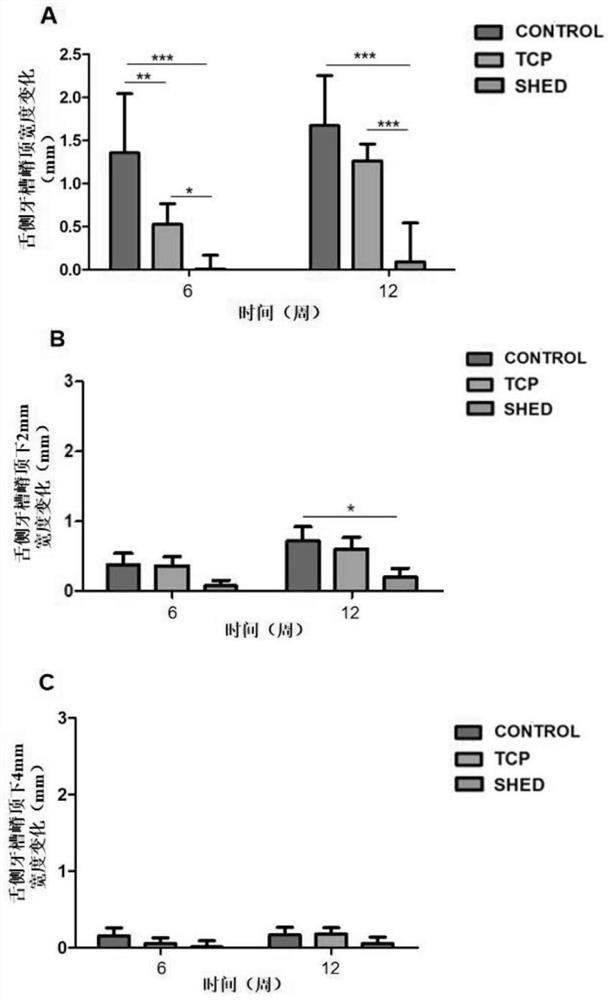3D printed tooth root stent for alveolar bone site preservation, and preparation method thereof
A 3D printing and alveolar bone technology, applied in the field of medical stents, can solve the problems of inability to effectively prevent the absorption of alveolar ridges and promote new bone, achieve good biological characteristics and promote the formation of
- Summary
- Abstract
- Description
- Claims
- Application Information
AI Technical Summary
Problems solved by technology
Method used
Image
Examples
Embodiment 1
[0037] This embodiment provides a 3D printed tooth root bracket for the preservation of alveolar bone sites. The 3D printed tooth root bracket is a hollow three-dimensional connected structure, the main material is β-tricalcium phosphate, and deciduous tooth pulp stem cells are adhered on the surface and processed. Osteogenic induction.
[0038] The preparation method of the 3D printing tooth root bracket of the present embodiment is as follows:
[0039]S1. Mandible data were collected by cone beam projection computerized tomography (corn bean computed tomography, CBCT). The scanning layer thickness was 0.25mm. After the scanning was completed, the jaw shape was reconstructed, and the standard dicom format file was saved. Import the data into MIMICS 17.0, adjust the threshold of the image, and optimize to make the image clear and complete. Output the processed image data in STL format, continue to optimize, carefully remove the tissues other than P2-P4 of the mandible, and ob...
PUM
| Property | Measurement | Unit |
|---|---|---|
| porosity | aaaaa | aaaaa |
| porosity | aaaaa | aaaaa |
| survival rate | aaaaa | aaaaa |
Abstract
Description
Claims
Application Information
 Login to View More
Login to View More - R&D
- Intellectual Property
- Life Sciences
- Materials
- Tech Scout
- Unparalleled Data Quality
- Higher Quality Content
- 60% Fewer Hallucinations
Browse by: Latest US Patents, China's latest patents, Technical Efficacy Thesaurus, Application Domain, Technology Topic, Popular Technical Reports.
© 2025 PatSnap. All rights reserved.Legal|Privacy policy|Modern Slavery Act Transparency Statement|Sitemap|About US| Contact US: help@patsnap.com



